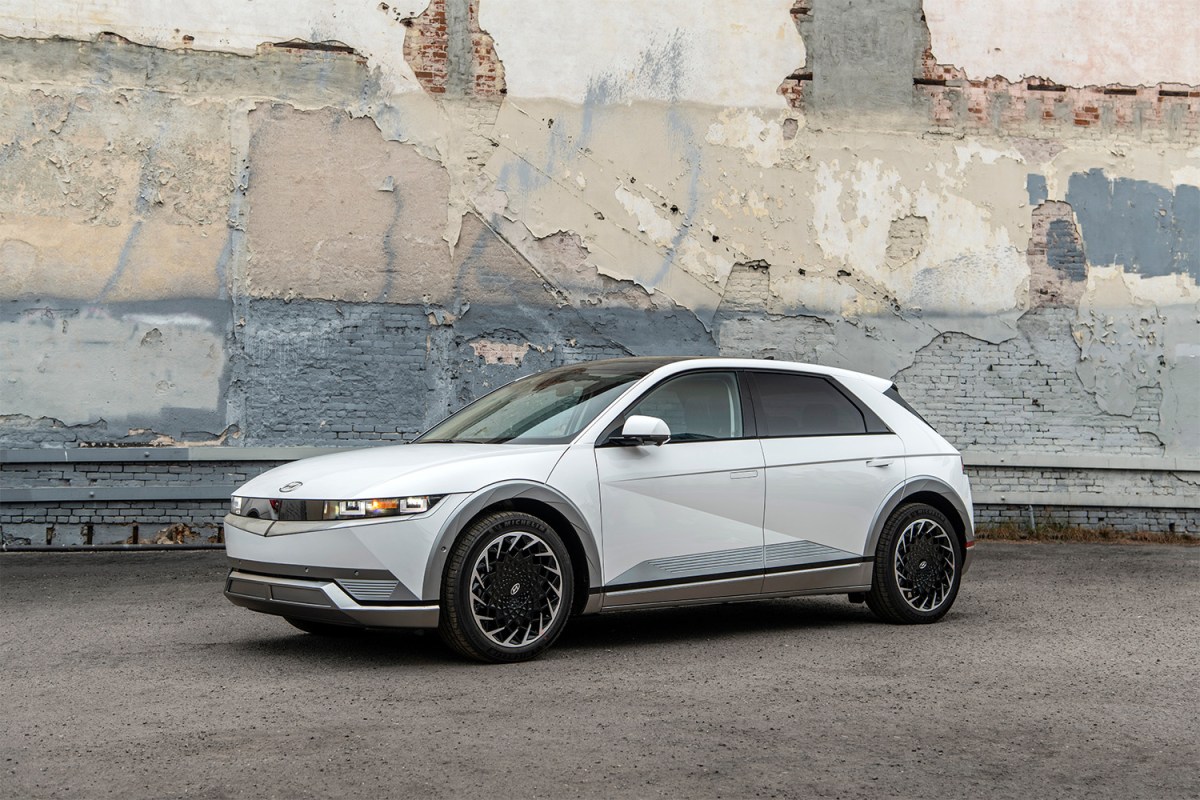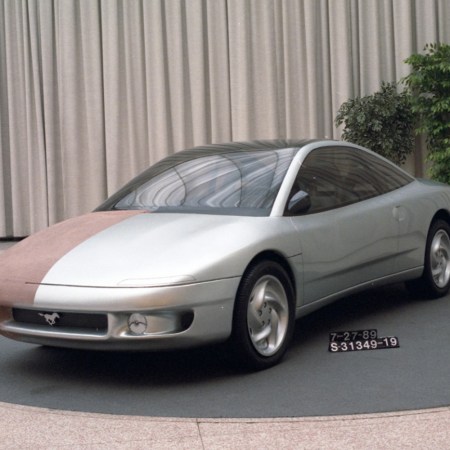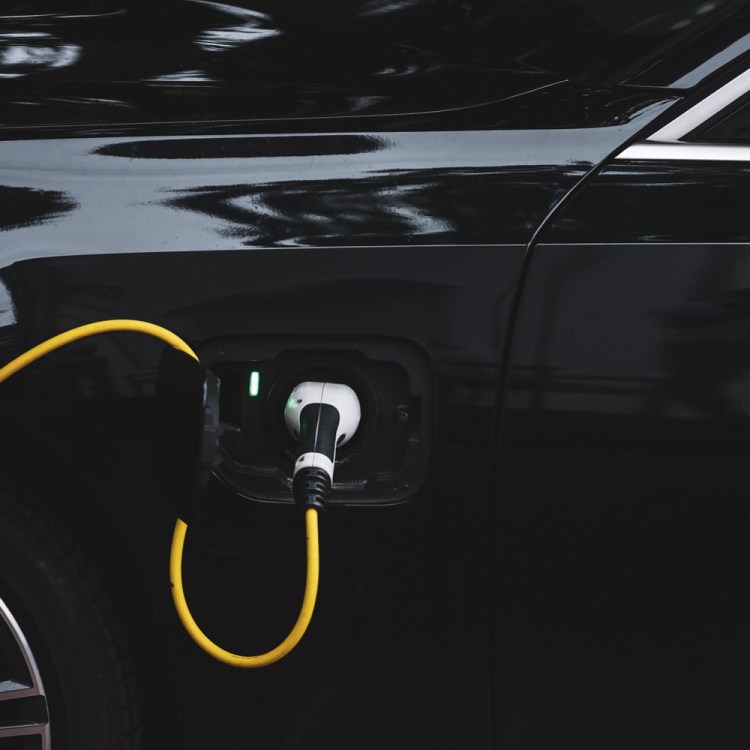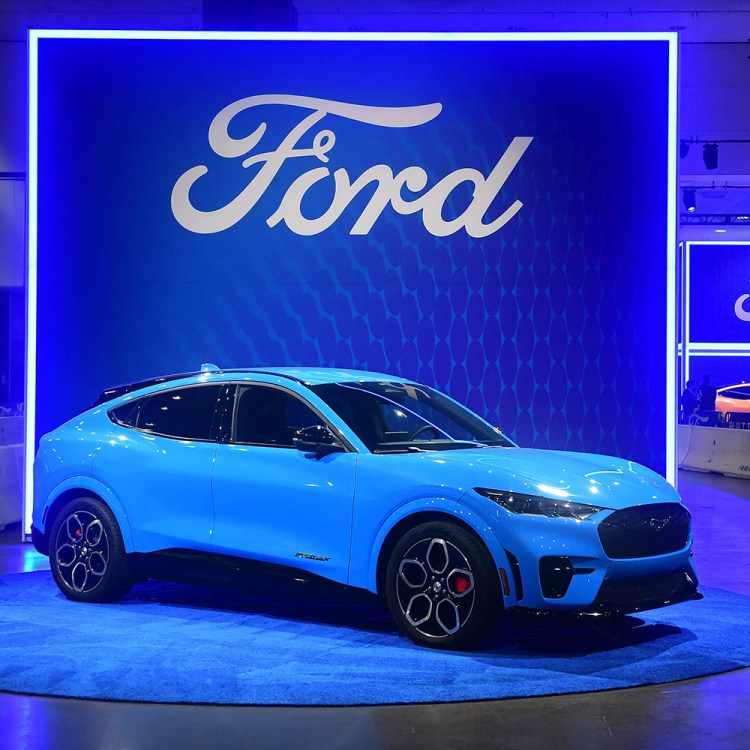By show of hands: who expected Hyundai to lead the way when it came to affordable, next-generation electric vehicles in America? Although General Motors (the Bolt) and Ford (the Mustang Mach-E) have each made important, pioneering efforts in the realm of everyday EVs, it’s Hyundai that is quietly pushing the limits of what drivers can expect from a battery-powered automobile.
The leap from its original electrified stable (the Soul EV, the Ioniq EV, and the Kona EV) to the 2022 Hyundai Ioniq 5 is a substantial one. Riding on the brand’s new E-GMP platform, the Ioniq 5 introduces not just additional driving range, but, even more importantly, the ability to charge at speeds of up to 350 kW — a rate that allows for meaningful top-ups to 80 percent full in an advertised 18 minutes of plug time.
That’s far quicker than anything outside the realm of luxury has to offer, made all the more impressive by the Hyundai’s affordable starting price. Of course, if all it had to offer was solid range and supercharged electron sipping, there’d be less reason to enthuse about the Ioniq 5’s package. Good thing then that its pastiche of practicality, style, and performance make it perhaps the most complete sub-$50k electric car around.
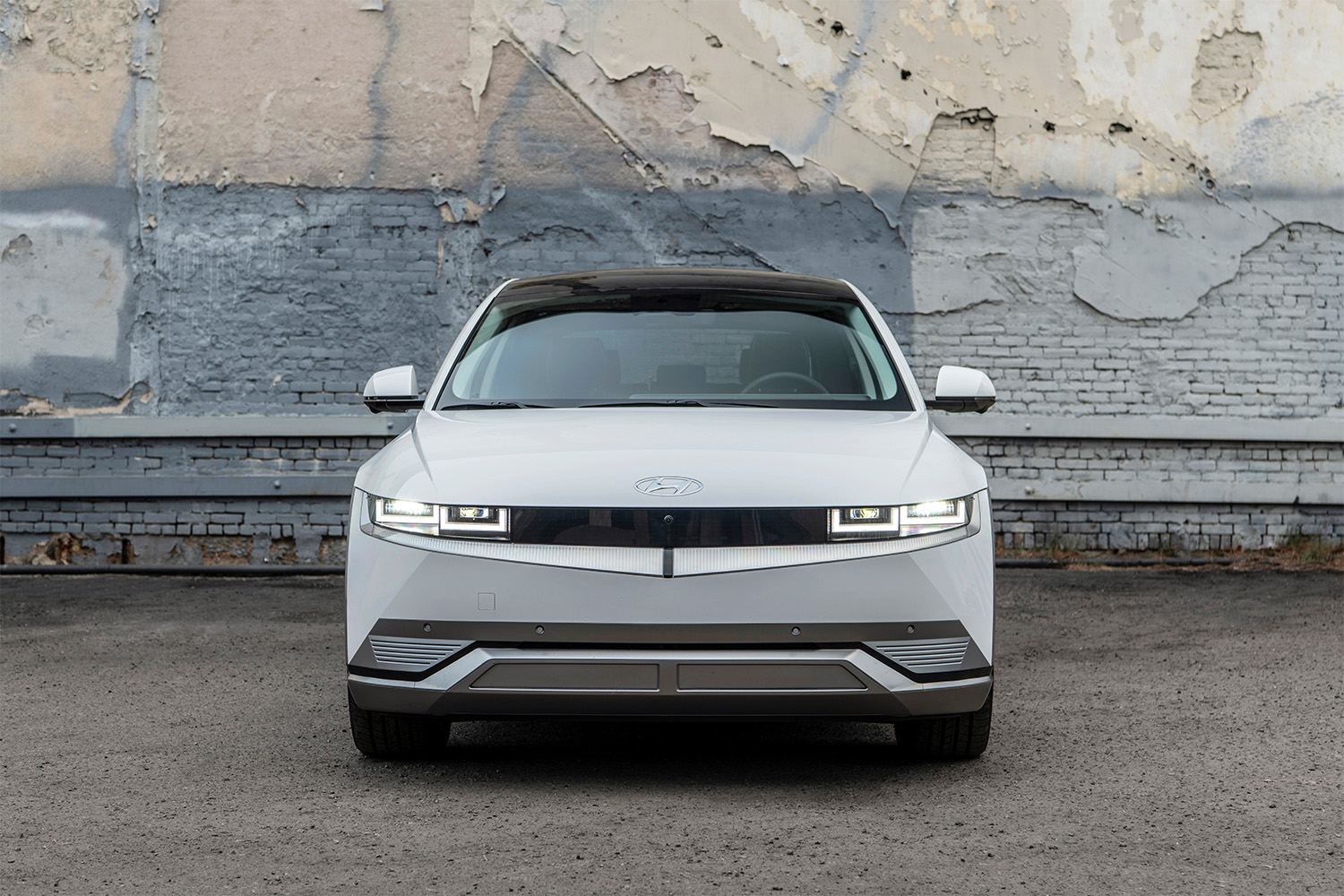
Bigger Than It Looks
The first thing to understand about the 2022 Hyundai Ioniq 5 is that photos don’t quite do it justice. For some reason, any static image of the Ioniq 5 portrays it as considerably smaller than its generous, real-world proportions. This is no modestly-sized hatchback, but a legitimately roomy crossover with a wheelbase that eclipses that of several class-up three-row haulers. That translates into not just good amounts of room for riders front and rear, but just over 60 cubic feet of total cargo space. That might be a mid-pack number for a family ride, but the Ioniq prizes passenger space over luggage, and there are still numerous nooks and cubbies for stuffing bags and other smaller-sized items, (on top of a vestigial ‘frunk’ found under the Ioniq’s hood).
What’s unmistakable, whether witnessed in person or graven image, is that Hyundai’s fashion-forward design. With a profile like that of a softened arrowhead, drawn to a point both at the leading edge of the bumper as well as at its hatch, the Ioniq 5 is both purposeful and muscular, a solidly-hewn hunk of aluminum, steel, and glass that feels like the next step in the automaker’s design language. Distinct from other autos on the road, but not because it’s been festooned with tip-offs as to its battery-powered roots, the Ioniq 5 is perhaps the most attractive model in the entire Hyundai line-up. If only it came with a rear wiper: the wing attached to the top of the hatch doesn’t do the job of keeping the canted back-glass clean of snow or grime, and is the most common complaint of current owners I polled.
The Ioniq’s cabin does a more obvious job of flagging the fact that you’re driving an EV. Smoothed-out door panels match a flat pair of 12-inch LCD screens that serve as the primary interaction and information points on the dash for driver and passengers, but Hyundai has made sure to include buttons for the heating and cooling controls on the center stack as well as a volume knob (in addition to physical toggles on the steering wheel).
The are often-overlooked details in the modern quest to render automotive interiors entirely featureless, and they make it much easier to keep attention focused on the road while changing stations or bumping up temps. It’s an overall attractive presentation throughout the Ioniq’s interior, and I had little difficulty getting up to speed with its intuitive on-screen menus and various systems and settings.
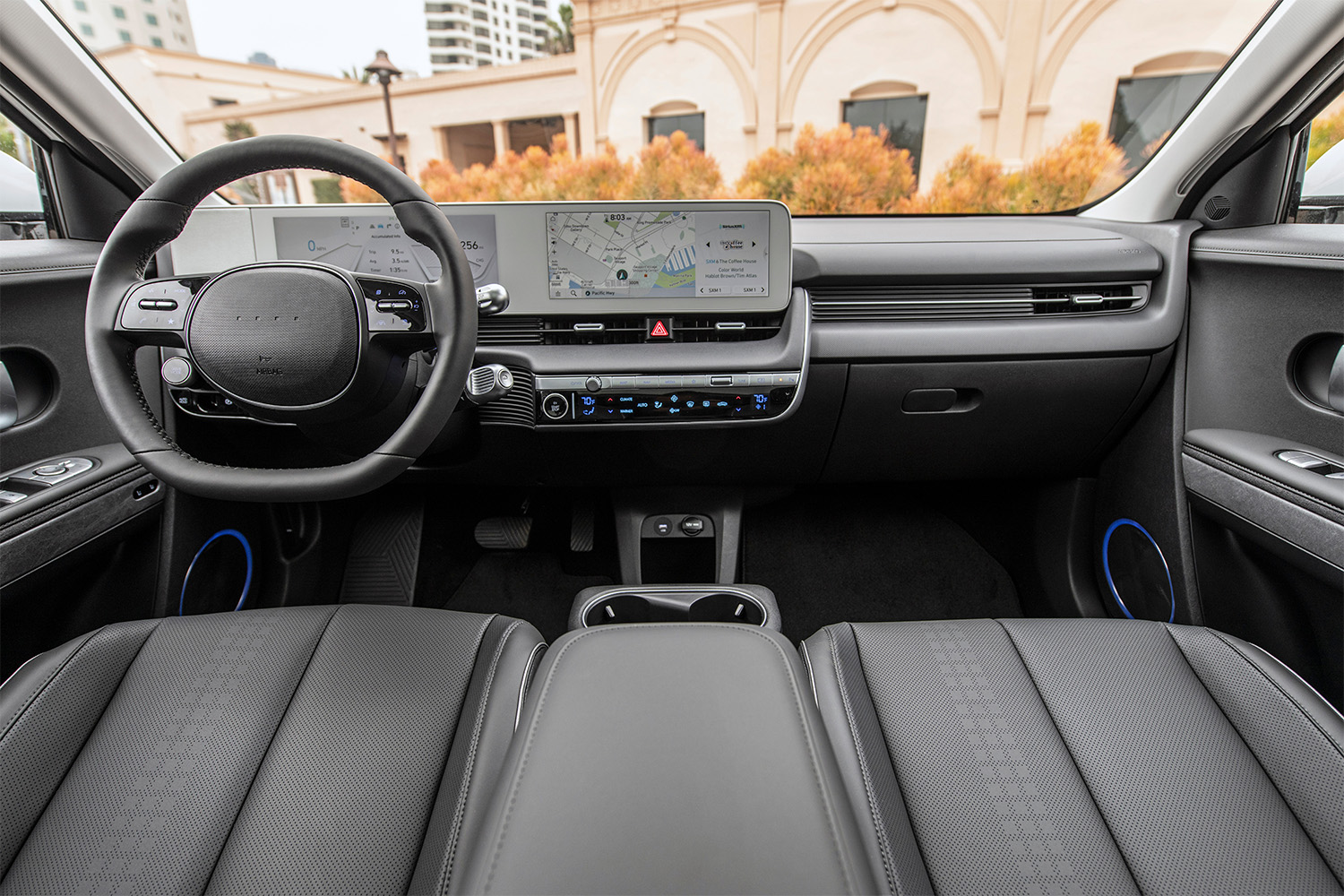
All Charged Up
The versatile E-GMP setup lurking beneath the Ioniq 5’s arresting exterior can also be found under similarly-sized Kia and Genesis electric vehicles. Available in a variety of flavors, the top-tier Limited trim I drove boasted a pair of electric motors, all-wheel drive, and up to 256 miles of driving range from its 77.4-kWh battery pack. Combined output from the motors checks in at 320 hp and 446 lb-ft of torque, with pricing for the limited climbing to just under $56,000 (although federal tax credits slice a considerable $7,500 from this figure, dropping it below the $50k mark again).
If you’re looking for extended driving distance, the base 225 horsepower, single-motor edition of the crossover features 303 miles of range from its rear-wheel drive setup. A smaller battery will also be available later on in the model year, paired with a lower-output motor.
From a performance perspective, the Hyundai is quite good at the standard EV party trick of straight-line speed, ratcheting up to 60 mph in 4.5 seconds from a standing start thanks to its copious torque and AWD grip. It would be a stretch to call the Ioniq 5 an enthusiast-aimed effort, given that its suspension setup is tuned more for comfortable cruising than all-out cornering, but that’s in no way an indictment of the vehicle. The Ioniq is unabashedly an all-arounder, and when sampled in this context it excels.
Quiet, easy to drive, and featuring the ability to grab more or less energy from its brake regeneration system via a set of steering wheel paddles, the 5 elucidates just how far EVs have come over the course of the past few years. There is virtually no downside to commuting in this vehicle versus a traditional gas-powered model, as its range estimates proved to be wholly accurate and even its charge time at stations far below its 350 kW max were shorter than expected.
The Hyundai also comes with a limited self-driving suite that responded well to the road around me, even initiating and completing lane changes with the simple flick of the turn signal. I’m not sure who, exactly, that feature is aimed at—it promotes a somewhat risky detachment from the immediate environment—but it worked well on bright, sunny days. Less impressive is the Ioniq’s method of keeping you informed as to whether its driver assistance features are actually active. Restricted to a pair of tiny icons at the top of the gauge cluster in most configurations, they are easy to miss and can lead to some en-route startles resulting from the system shutting down in the absence of lane markings or one of the sensors becoming occluded.
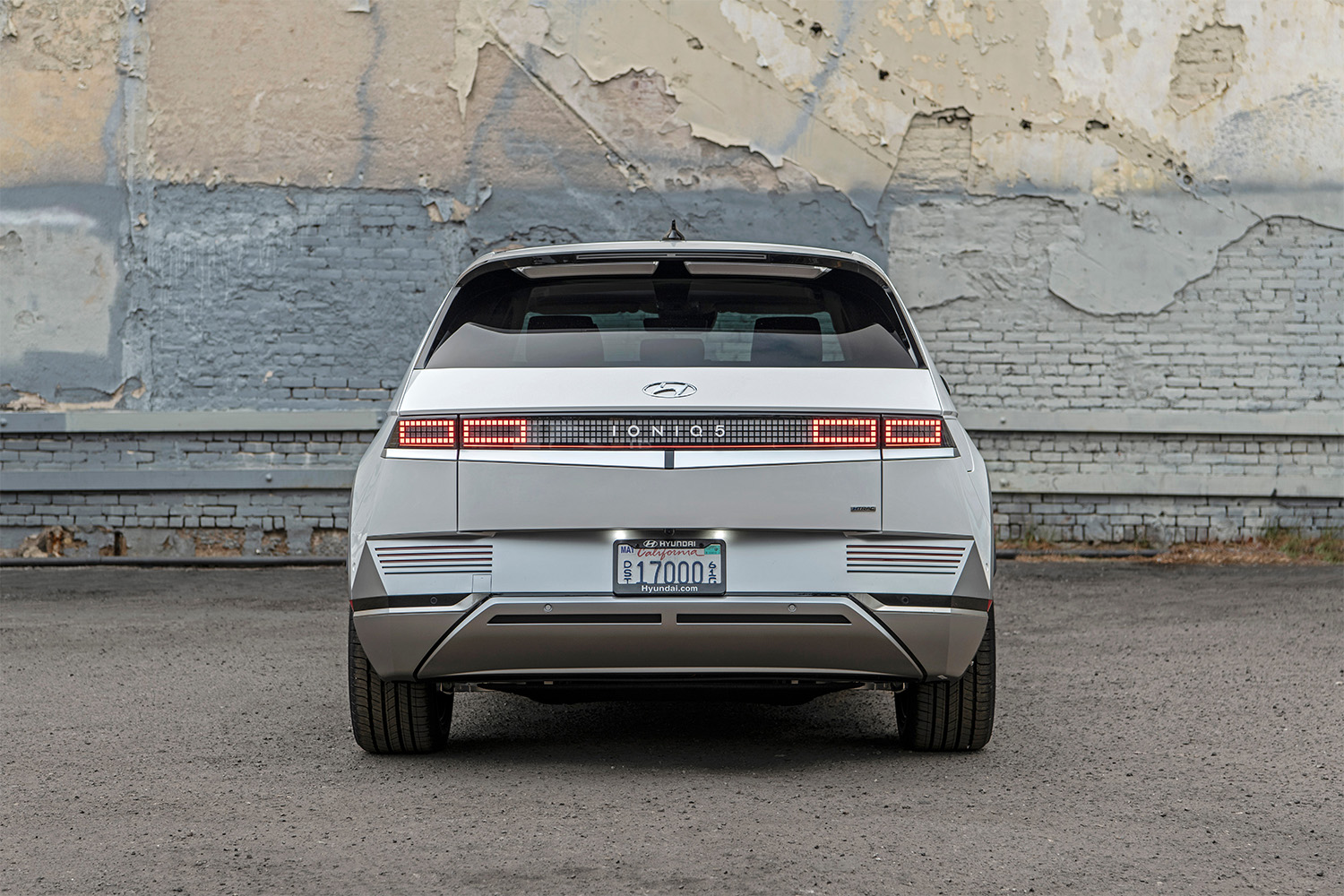
One Of Many, Best Of All?
There is certainly no shortage of practical-minded electric vehicles current on offer. The Ioniq 5 goes up against not just its Kia EV6 platform-mate, but also the Volkswagen ID.4 as well as the previously-mentioned Mustang Mach-E and the considerably more expensive Tesla Model Y, each of which is roughly similar in size and mission statement.
Ultimately, it’s the Ioniq 5’s combination of price, charging speed, and real-world range (on top of its attractive appearance), that make it such a compelling option. Although the current plug-in infrastructure lags the Hyundai’s 350-kW capabilities in a major and frustrating manner, the car is future-proof in a way that many of its rivals aren’t: as fast chargers become more common, it will have a definite advantage over its Ford and Volkswagen rivals, which replenish at less than half its speed. Reducing the time at the plug is the current convenience frontier for electric cars, and the Ioniq 5 finds itself leading the charge to charge.
This article was featured in the InsideHook newsletter. Sign up now.
